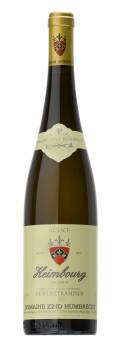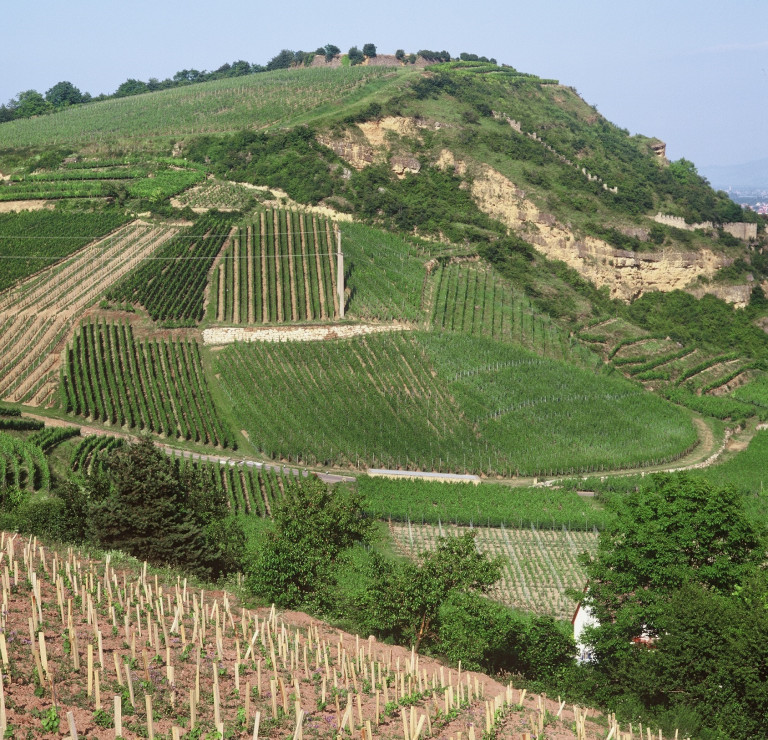
Technical presentation
| Bottling : | September 2006 |
|---|---|
| Acquired alcohol : | 14° |
| Residual sugar : | 42.5 g/l |
| Total acidity : | 2.9 g/l H2SO4 (4.5 g/l Acide Tartrique) |
| pH : | 3.8 |
| Yield : | 28.5 g/l |
| Average age of vines : | Vineyard planted in 1983 |
| Terroir : | Heimbourg |
| Sweetness index : | 3 |
| Soil : | Calcaire Oligocène, Exposé ouest, Medium to steep slope |
Description of the wine Gewurztraminer Heimbourg 2005
Just like the Pinot Gris, and for the first time in this Gewurztraminer vineyard since 1989, there was enough botrytis on the grapes to allow us to produce an SGN. The vineyard westerly orientation may help the development of botrytis, but Gewürztraminer has tough and botrytis resistant skins, so we were obliged to search every single berry affected by noble rot for the SGN, leaving almost none for this wine. Nevertheless, the healthy grapes still reached a very high level of ripeness despite the absence of the noble rot and the fermentation stopped after a few months, keeping a significant sweetness in the wine.

Tasting notes
01/2007 : I expected a delicate aromatic wine in this vineyard in 2005. Well, delicate and harmonious it is, but since there is no botrytis influence, the powerful calcareous character dominates the wine. The nose shows strong meaty, smoky, stony aromas, almost austere. The palate comes as a total surprise. One doesn’t expect as much richness from the nose. The finish is well balanced with good acidity and sweetness will guarantee a long life to this wine. Desperately needs to be carafed before being served.

The Heimbourg of Turckheim
The wines produced on the Heimbourg are rich, opulent, often spicy and can include noble rot. The slower ripening of the grapes often produces wines that are aromatically expressive from a young age, contrary to its neighbour the Clos Jebsal with whom we have to show patience.